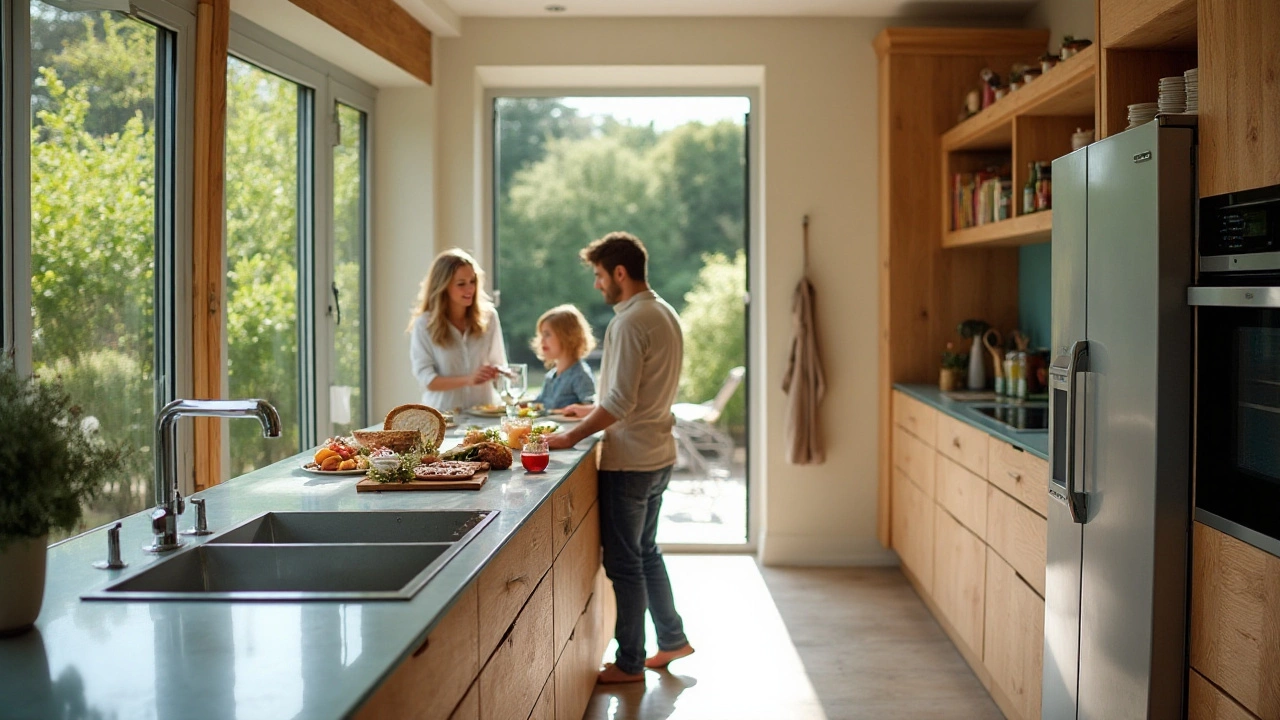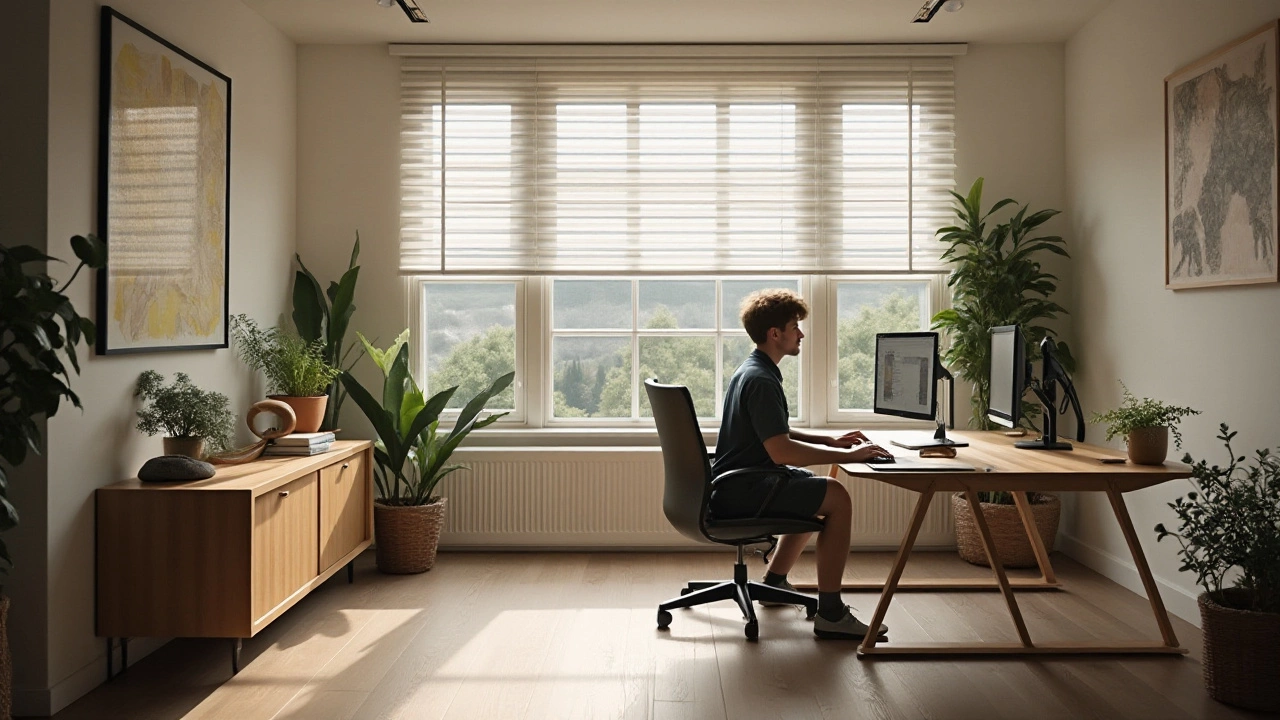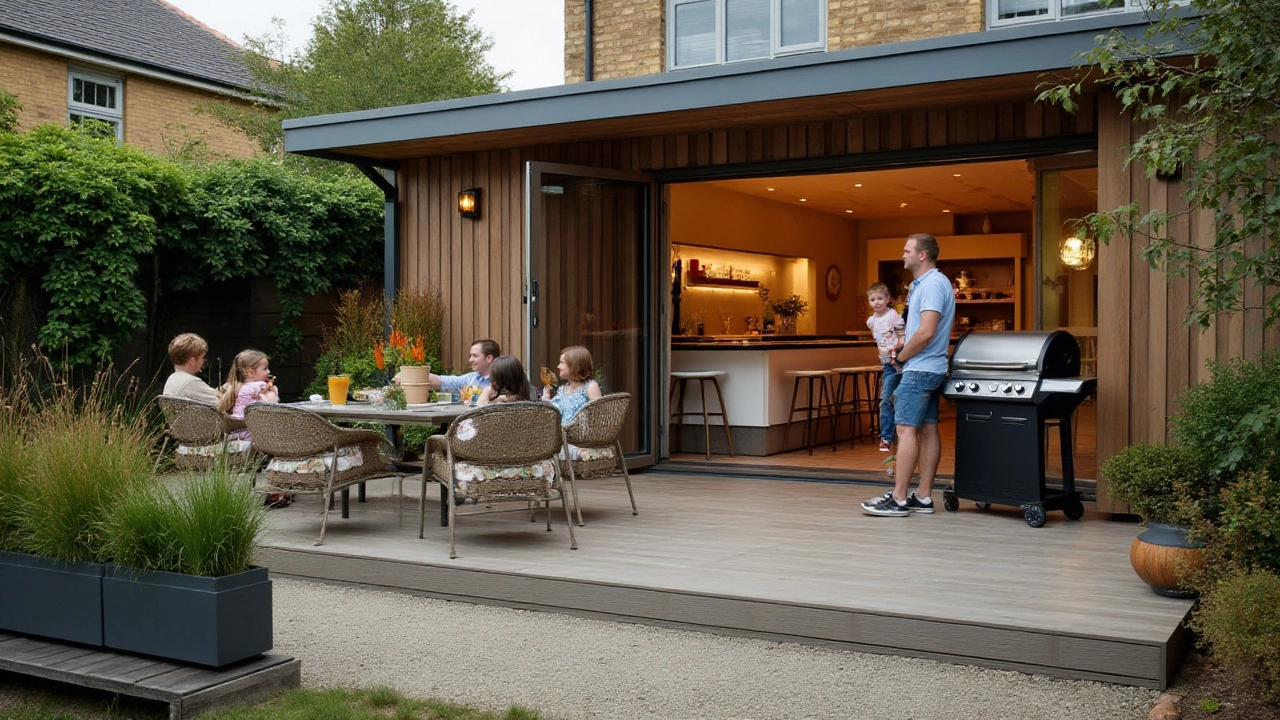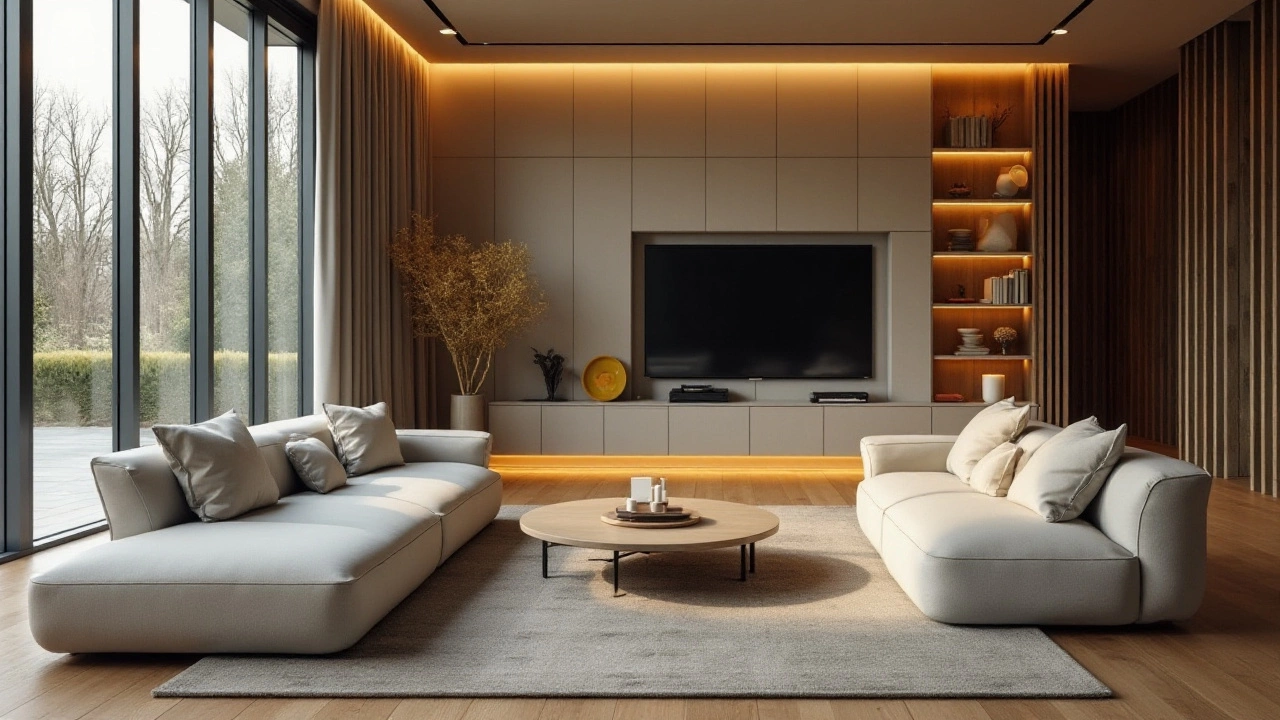Home is where comfort and style meet, and with 2024 in full swing, there are plenty of ways to modernize your living spaces. Embracing contemporary design doesn’t just provide visual appeal; it makes life a tad bit easier, a little more efficient, and definitely more enjoyable.
Modernizing goes beyond just giving your rooms a facelift with some fresh paint or new cushions. It’s about integrating new technologies, making choices that favor the environment, and devising a layout that can cater to more than one purpose - think home office meets guest room design. It's also about creating a minimalist yet cozy environment that’s not only inviting but also relaxing.
Whether you're a tech enthusiast anxious to convert your residence into a smart home, someone who wants to contribute to sustainability by using eco-friendly resources, or just a person eager to rework your spaces for improved functionality - transforming your home in 2024 can reflect all those desires and more.
- Smart Home Integration
- Sustainable Design
- Flexible and Multifunctional Spaces
- Minimalist Aesthetics with Comfort
Smart Home Integration
Transforming your living space into a modern home interior revolves around embracing smart technology. In 2024, smart home integration isn't just a luxury; it's becoming a standard. A contemporary home thrives on efficiency and comfort, much of which is possible by leveraging the power of smart home devices. From smart thermostats that learn your heating preferences to voice-controlled lighting systems that adapt to your mood, home automation is reshaping the household experience.
The introduction of advanced smart assistants like Amazon Alexa and Google Assistant has made controlling household devices as simple as issuing a voice command while sipping your morning coffee. This means you can wake up, command, "turn on the news," and trust your virtual helper to oblige. But beyond convenience, these home automation tools offer energy efficiency by optimizing power usage— an attractive feature considering rising energy costs and environmental awareness.
Safety and security are other profound aspects of smart home integration. Installing smart locks and security cameras that can be monitored via your phone offers peace of mind whether you're at work or on vacation. Did you forget to lock the door? No problem. Ensure your living quarters are secure with a tap on your smartphone. Reports have shown that homes with smart security systems experience fewer break-ins, adding a supplemental layer of protection.
"Smart homes not only talk to you—they listen, learn, and adapt," says industry expert Mark Rober.
Choosing the Right Devices
With a dizzying array of gadgets flooding the market, selecting the appropriate devices can appear daunting. The trick is to prioritize your needs. If entertainment is key, opt for a smart TV compatible with all your streaming subscriptions. If energy management piques your interest, Nest Thermostats may be the solution. These considerations illustrate the degree to which home automation can be fine-tuned to personal tastes.
When planning a smart home, seamless connectivity is paramount. Opt for devices compatible with each other. Many families prefer adopting established ecosystems such as Apple HomeKit, Samsung SmartThings, or Amazon Echo, which ensure intercompatibility between connected gadgets. This interoperability means the same controller manages the lighting, thermostat, locks, and even appliances, enhancing the user experience.
Future Perspectives
Looking ahead, the upward trajectory of smart innovation promises even more fascinating breakthroughs. Experts predict that artificial intelligence could transform every household into a neural network, allowing customized interfaces unique to each resident. Emerging technology aims to create intuitive homes that understand not just the words we speak but the emotions we express. Consider how delightful it would be if your home anticipated your needs before you voiced them.
| Device Category | Popular Brand | Market Share (%) |
|---|---|---|
| Virtual Assistants | Amazon Alexa | 70 |
| Smart Thermostats | Nest | 61 |
| Smart Security | Ring | 45 |

Sustainable Design
Sustainable design isn't just a trend—it's a movement that's transforming how modern home interiors are crafted. At the heart of sustainable design is the desire to minimize environmental impact while still producing aesthetic and functional spaces. This often means using materials that are recycled, renewable, or sourced responsibly. Bamboo, for instance, is a popular choice, known for its rapid growth and durability. It's replacing traditional timber in many homes around the globe. Incorporating sustainable design doesn’t just stop at choosing the right materials; it's about integrating systems like solar panels, rainwater harvesting, and energy-efficient appliances to reduce the carbon footprint of your home. Making these decisions can significantly lower energy bills and promote a healthier living environment.
Embracing sustainable design also means thinking about the life cycle of products. Opting for furniture that’s crafted from high-quality, long-lasting materials means less waste in the long run. Companies are now focusing on craftsmanship and the longevity of their products instead of promoting disposable designs. When purchasing new items, consider whether they can be refurbished or recycled down the line. Investing in pieces that can adapt to various interior themes can also reduce future purchases, supporting the minimalist trend that's gaining traction. Home renovation tips today emphasize these aspects, helping create an eco-friendly space that doesn’t compromise on style or comfort.
Immense attention is given to indoor air quality in sustainable design. Materials low in volatile organic compounds (VOCs) such as paint and flooring are not only better for the environment but healthier for those living within the house. The transition to these materials has become easier as more manufacturers provide low-VOC options without sacrificing color or finish quality. The added benefit of healthier indoor air quality is a compelling reason for many to make the switch. Also, plants are being used more in interior spaces not just for their aesthetic appeal but for their air-purifying properties, making them a two-in-one solution. As NASA acknowledges, plants like the Peace Lily and Boston Fern can aid in purifying the air in closed environments.
For those eager to make a sustainable change, renovating with a conscientious mind can also include switching to energy-efficient lighting. LED lights are now widely accepted as the go-to for domestic settings, offering a longer life span than traditional incandescent bulbs and consuming considerably less power. They are available in various styles, ensuring they can fit any design preference from vintage to ultramodern. Similarly, automatic light sensors can be installed to keep energy usage in check by turning off lights automatically when rooms are unoccupied. To see how these changes add up, consider the data: Homes utilizing energy-efficient lighting can see a reduction in electricity consumption by up to 30%, significantly impacting household utility expenses and supporting eco-friendly goals.
“Sustainable design is not about a singular solution; it's about continually adapting and improving choices for the wellbeing of our planet,” emphasizes renowned architect Renzo Piano. His architectural approach balances environmental responsibility with meticulous design, setting a precedent for future homebuilders.
In conclusion, sustainable design makes it feasible for individuals to create modern home interiors that respect our planet. The integration of eco-friendly elements doesn't just improve aesthetics and create functional spaces; it actively contributes to the planet's sustainability. While these changes might seem daunting, each little step counts towards a larger impact, and diversifying our home environments in such a fashion resonates well with future generations.

Flexible and Multifunctional Spaces
In our rapidly changing world, the idea of flexible and multifunctional spaces is making waves in home design. This isn't just about having an extra guest room that doubles as a study; it's about crafting spaces that can seamlessly shift functions based on your needs throughout the day. In 2024, we're seeing living areas adapted to suit multiple roles, from work-from-home offices to vibrant family spaces, making the most out of every square inch your home has to offer. For instance, consider a dining room with a sturdy table that transitions into a workstation during the day, a venue for family dinners by evening, and perhaps even a spot for board games or crafting by night.
The magic of modern home interiors lies in innovative furniture that transforms, such as a foldable bed within a bookcase or hidden storage spaces within ottomans and benches. Think about a sleek sectional sofa that adjusts to form a comfy guest bed when relatives come to visit. Such convertible furniture pieces have become the cornerstone of multifunctional room design, allowing homes to function effectively, no matter the size or shape. These designs elevate everyday living, combining style with practicality in ingenious ways. As the renowned architect and designer Philippe Starck once noted:
“A designer's job is to imagine another universe that is not insignificant, where we can escape our surroundings.”His insight highlights how much thought goes into making modern spaces as versatile as possible.
Another brilliant approach to achieving flexible spaces is the use of sliding doors or collapsible walls. These elements enable homeowners to open up or divide the areas in their homes as required, providing privacy and unity in one sweeping motion. For example, a collapsible wall between a living room and a bedroom can create a large open plan for social events, then transform into more intimate, independent rooms when guests need a place to stay. Home design 2024 truly embraces these adaptable spaces, incorporating avant-garde architectural techniques to balance openness and seclusion.
Interestingly, studies conducted in 2023 showed that homes featuring multipurpose spaces could enhance family interaction by 20%, while also improving homeowner satisfaction due to increased practicality and space utilization. This data points to a shift in preferences, where families are choosing dynamic spaces that grow and change just like their daily routines. With such promising statistics, households are more inclined to invest in thoughtful designs and smart solutions that offer longevity and adaptability.
Consider installing modular shelving systems that morph to suit any room's function, from displaying art to organizing office supplies, and don't forget about choosing your color palette wisely. Neutral tones can bring a sense of cohesiveness when spaces need clarity and transition, while pops of color through movable decor like cushions, rugs, and artworks can quickly personalize a space for different occasions. Ultimately, creating a home renovation strategy that emphasizes flexible spaces means you're ready for anything life throws your way, which is a testament to how far we've come in interior design. By focusing on both aesthetics and practicality, you can ensure that your abode is ambitious yet livable, offering a reflection of your lifestyle in every corner.

Minimalist Aesthetics with Comfort
The journey towards embracing minimalist aesthetics doesn't mean sacrificing comfort or warmth. When you think of minimalism, envision spaces that breathe. Clear the clutter and let the design elements you choose to have space to shine. The minimalist movement isn't about bareness – it's about intentionality. Imagine coming home to an environment where each piece of furniture, every painting, and even the smallest trinket resonates with your sense of style and functionality. Emphasizing quality over quantity leads to timelessness; something as simple as a well-crafted sofa not only harmonizes with the space visually but invites you in with a promise of leisure.
A key aspect of minimalist design is a neutral color palette, typically featuring shades like white, beige, or gray, which fosters a calming environment. These hues serve as a blank canvas and allow for strategic pops of color through accessories or artworks, adding a dynamic dimension to your space. Wood and natural textures can be introduced as well, creating a symbiotic relationship between minimalist elegance and the comfort of home.
Another focal point is lighting; natural light reigns supreme in minimalist design. If feasible, opt for large windows or glass doors that usher in sunlight, making interiors feel expansive. Light fixtures and bulbs with adjustable settings afford you greater control, allowing you to alter the ambiance to suit your mood.
- Choose multi-purpose furnishings like ottomans with storage or extendable dining tables, crafting spaces that are both functional and uncluttered.
- Incorporate greenery through plants which act as natural air purifiers while adding a splash of color.
- Include textiles such as throws or cushions in rich textures to enhance comfort without overwhelming simplicity.
Design expert Marie Kondo once noted, "Discard everything that does not spark joy." This philosophy of thought guides us in creating spaces that are free of chaos and rich in comfort.
One interesting fact more people are unaware of is that physical clutter can sometimes contribute to mental clutter as well. By maintaining clear and organized spaces, endorsing minimalist living can open up mental spaces to breathe, fostering a more relaxed and creative mind. With the noise of life minimized, what one adds becomes more intentional, ensuring every corner of your home radiates modern home interiors in ways that are both meaningful and supremely inviting.
Ultimately, embracing minimalism with comfort means each choice you make is fueled by both aesthetic appeal and a desire for lived-in comfort. You're not just designing a room; you're designing the life that unfolds within it.
